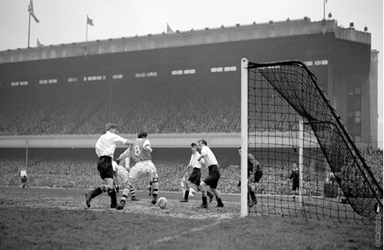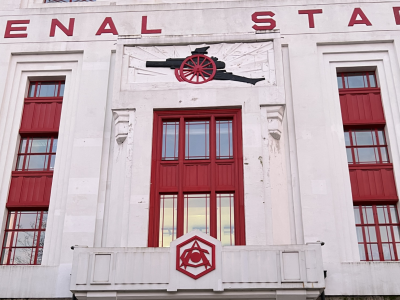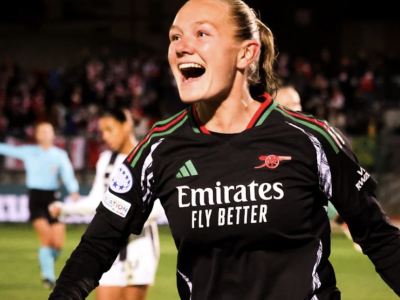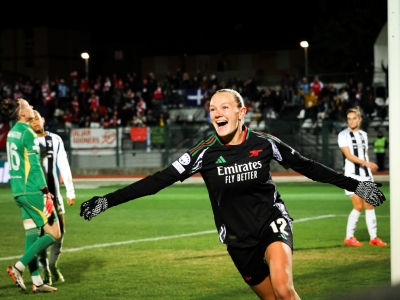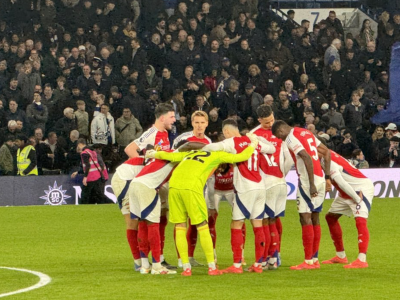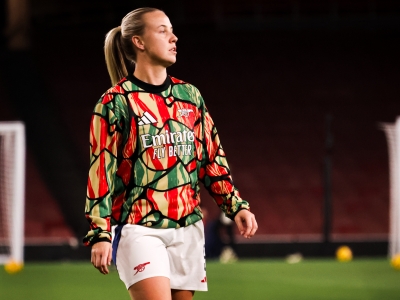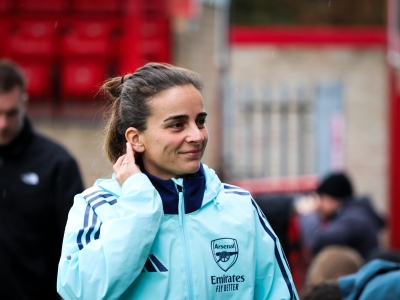Many existing football clubs grew out of teams from other sports (particularly Cricket clubs looking for a sport to pursue during the summer) and so it was with Burnley. The Clarets actually started life as Burnley Rovers Rugby Football Club, which was founded in 1880, but switched codes to become Burnley FC in 1882. The club moved to Turf Moor a year later, at the invitation of the town's cricket club, which still to this day are still situated next to the Football stadium. The Cricket club were actually founded as far back as 1833 and had been at Turf Moor a good forty eight years prior to the football club. At one hundred and thirty three years, Burnley FC are the second longest occupiers of their current ground in League football, behind Preston North End at Deepdale.
The Clarets were also founder members of the Football League in its founding season of 1888/89. The first meeting between Woolwich Arsenal and Burnley came in the First Round of the FA Cup in February 1896, where the Clarets inflicted a 1-6 defeat on the Gunners at Turf Moor. The following season Burnley dropped out of the top tier for the first time in their history, which led to the first league meeting between the two sides in September 1897 in which Burnley inflcted a 0-5 defeat on Arsenal. Arsenal’s first win over Burnley came in September 1901, which Arsenal won 4-0. One of the earliest pieces of footage of a Burnley game hails from 1902, from their home fixture against Man United at Turf Moor that year.
Burnley’s first major trophy was won in 1914, beating Liverpool 1-0 in the last FA Cup final to be played at Crystal Palace. Another historic aspect to this Cup Final was that it was the first time in which the reigning monarch (King George V) presented the trophy to the winning captain. Burnley’s first visit to Highbury came in April 1920, a game in which the Gunners won 2-0. Burnley would win their first League title in 1920/21, from that season their fixture with Tottenham would be captured by Pathe News. That season, Burnley lost all of their opening three games, however embarked on a thirty game unbeaten run until losing 0-3 to Man City on Easter Sunday after playing two games in two days. This run had been a record number of games without loss within one season, until broken by Arsenal’s invincibles in 2003/04. Burnley also reached the FA Cup Semi Final in 1923/24, against Aston Villa at Hillsborough which the Clarets lost 0-3.
The Clarets however were to finish second from bottom in 1929/30 and spend the rest of the decade in the second tier. While down there, the Clarets drew Arsenal at home in the fifth round of the FA Cup. The Gunners visit to Turf Moor brought a 7-1 victory for Arsenal, with goals for Jack Crayston, Cliff Bastin, Alf Kirchen and four for Ted Drake. Burnley returned to the top flight finishing as runners up in the second tier in 1946/47. That same season they reached the FA Cup Final after beating Liverpool 1-0 in a Semi-Final replay at Maine Road. The Clarets however would lose the 1947 FA Cup Final to Charlton 1-0 after extra time.
Burnley finished their first season back in the top flight in 1947/48 in third position, seven points behind champions Arsenal. That season Arsenal would beat Burnley 1-0 at Turf Moor in September with a goal from Reg Lewis. Back at Highbury on Valentine’s Day in February, Arsenal won 3-0 with goals from Don Roper and two for Ronnie Rooke. Burnley however were to spend the following four seasons in the bottom half of the top flight. During Arsenal’s successful FA Cup campaign in 1950, they were drawn at home to Burnley in the fifth round. A tie in which Arsenal won 2-0 with goals from Dennis Compton and Reg Lewis. The two sides were to meet in the FA Cup again in 1952/53 in the fifth round.
Burnley at the time had been a point ahead of Arsenal in the League table and, as Tom Whittaker explained in his autobiography: ‘only our most faithful of supporters gave us much of a chance’. As shown from the Pathe News footage of the tie, the Turf Moor pitch would be covered in a white blanket of snow (and that which had been removed from the pitch piled up as a big mound around the touchline area). Goals from Cliff Holton and Doug Lishman gave Arsenal a 2-0 win. The Gunners however were to be eliminated in the next round that year’s Coronation Cup Final winners Blackpool. This however allowed Arsenal to concentrate their efforts on the League title.
That year’s title race (rather akin to this year’s) saw the front runners - Arsenal, Wolves and Preston – unable to put a consistent run of form together. After that defeat to Blackpool in the Cup, Arsenal failed to win six games on the trot which left the Gunners as low as Sixth in the table. This however would be followed by five straight wins throughout the month of April which put Arsenal back on top of the table, before heading to Deepdale for the penultimate fixture of the season against fellow title challengers Preston North End on the final Saturday of the season where a win could have sealed the title.
At Deepdale however Arsenal suffered a 0-2 loss which put the Lancastrians level on points with the Gunners and to make matters worse three days on Preston won their final game with a 1-0 win over bottom of the table Derby at home with a goal from the famed Preston plumber, Tom Finney. By the time of Arsenal’s final fixture with Burnley, the Gunners were two points behind Preston North End and one tenth of a goal behind on goal average. Arsenal would go into their final game of the season against Burnley on 1st May at Highbury needing a win to secure the League title. Going into this game however, Burnley lay in sixth position within the top flight (a win would have put them fourth), meaning that Arsenal did indeed have a challenge on their hands to pull off a victory over the Clarets.
To make matters worse, rather like today Arsenal’s inconsistent form led to strained relations with the Highbury crowd who often derided the early fifties side for being a mere shadow of their dominant self, back in the thirties. An anonymous Arsenal player said of the Highbury crowd to a Daily Mail reporter that he was: ‘ashamed of the crowd and considered them the most unsporting collection in the country’. The game was a 6.30PM kick off on the Friday night before the FA Cup Final, which drew a crowd of 51,586, including a few Lancastrians down in London for the Blackpool v Bolton final the following day. Don Roper informed in Spurling’s book ‘Highbury: The Story of Arsenal in N5’ that when the Arsenal side met at Kings Cross for the pre-match meal that: ‘lots of Blackpool and Bolton fans were milling around….all of them were coming up to us and wishing us well, because Preston were the local enemy. And they weren’t overly keen on Burnley either!’
Conflict between the crowd and the side was also clearly dropped on the night as Doug Lishman informed in Spurling’s book: ‘the crowd was at their best that night. The noise they made was unbelievable, it was really ear piercing – enough to make the hairs on the back of your Neck stand on end. However much the players and fans were in conflict that season, I can’t deny they were superb on that night’. Within eight minutes Arsenal were a goal down from Burnley’s Roy Stephenson, two minutes later however Alex Forbes equalised for Arsenal with a long range drive. After a quarter of an hour Doug Lishman put Arsenal 2-1 up, with Jimmy Logie adding a third for the Gunners after twenty one minutes.
A heavy rainfall during half-time and a season’s worth of playing turned the Highbury pitch into a quagmire (Arsenal’s Don Roper claimed that the pitch barely had a blade of grass on it) with many wondering even if the match would be abandoned due to such conditions. Making matters worse, with fifteen minutes to go Billy Elliot (obviously not he of the Brit flick Blockbuster of the same name!) pulled one back for Burnley. With this being the days before substitutes were permitted, a tired Arsenal were effectively playing with eleven across the back in order to hold out with the crowd treating each clearance as if it were a Cup winning goal. The tension was even too much for Arsenal boss Tom Whittaker, who exited the scene to pour himself a double brandy (just three years later Whittaker would suffer a fatal heart attack while still at the helm at Highbury).
Don Roper explained that with a minute to go he’d caught Billy Elliot within the box and that: ‘these days he’d have gone to ground and won a penalty. To his credit he stumbled and carried on. He said, ‘There are better ways of denying you the title than that Don’. The same player hit the bar seconds later. Arsenal held out to the final whistle and had stolen the title on goal average by 0.099 of a goal. The final whistle saw the crowd invade the pitch in celebration and Captain Joe Mercer chaired off the pitch. On the main steps outside of the East Stand after the game, thirty nine year old Joe announced his retirement to the cheering fans gathered outside. He didn’t stick to his word and played on to his fortieth year, however a broken leg the following season forced him into retirement.
Sadly, no film footage exists of this game in any form, despite it being a finish as exciting as Anfield ’89 or the Etihad in 2012 and so is largely overlooked within footballing folklore. In many ways, this underlined the growing importance of TV and media within the game at the time, as the FA Cup Final played the following day – watched by an increased national audience of TV viewers which leaped after the post-Coronation rise in TV ownership – became forever enshrined within the collective national memory as the ‘Matthews Final’, as thirty seven year old Stan finally picked up a winners medal.
As will be seen tomorrow however, this fixture would the start of a period of relative decline for the Gunners, who would not win another trophy for the next seventeen years. For Burnley however, it would be the start of their halcyon days under a maverick local businessman who would assume the mantle of the Club’s chairman just two years on.
*Follow me on Twitter@robert_exley

